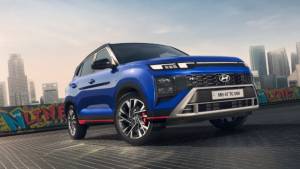Mercedes-EQ EQB review, first drive
The Mercedes-Benz EQB will soon make a beeline for our shores, with an expected launch later this year. This would make it the fourth EV in the Benz portfolio on offer in India following the EQC, the EQS AMG and the flagship EQS sedan. Mercedes-Benz has embarked on a smart strategy, some of its electric vehicles are imports, whereas some, like the EQS will be locally assembled. The EQB business structure hasn't been finalised yet, but in all likelihood, initial cars that come to India will be CBUs initially followed by a CKD strategy as numbers increase. The India spec model will be the EQB 300 4MATIC, the middle order variant. The expected price for this EQB variant should be just under the EQC's almost 1 crore ex-showroom tag. That would make it fairly attractive considering there are several advantages it has over the EQC, namely its range and utility.
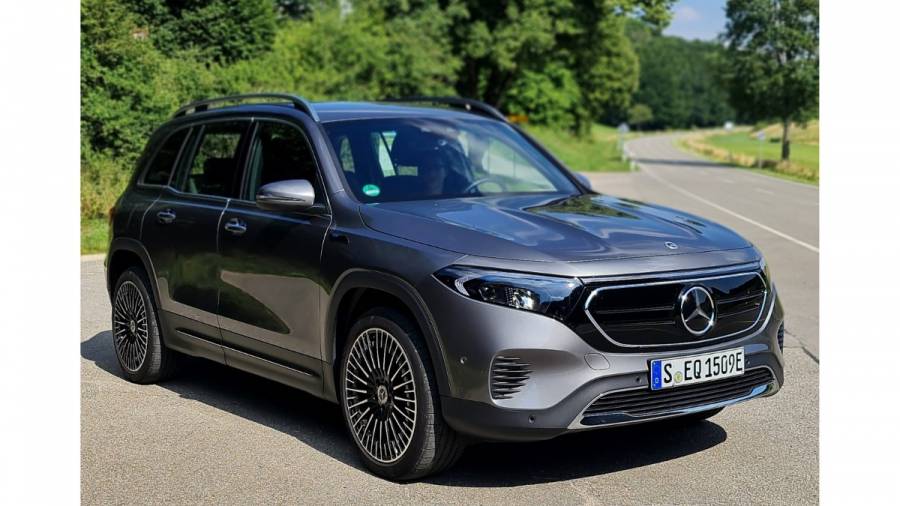
I drove the EQB in and around Stuttgart, where Mercedes-Benz is headquartered, and came away quite pleased with what I can surmise is a very promising electric vehicle even though its architecture is similar to the EQC. You see, the EQB much like the EQC is based on its ICE counterpart, the GLB which was the only model in the Benz lineup that never made it to India. The EQB was never built as a pure EV, so it shares a lot of its underpinnings with the GLB but is heavily modified to envelop electrification. That however does not take away from the fact that it has for instance better ground clearance than the EQC, which continues to bother consumers of the EQC in India. The EQB has also got an optional 7-seater package, but will Mercedes-Benz offer that option in India is yet to be seen.
The EQB is a practical-looking SUV too, a bit boxy with an old-school design approach, but it's not unattractive. Under the EQ badge, the front end is heavily remodelled and with the EQ design elements such as that blacked-out grille, the single block bumper with the inverted air dam, and the large intakes on the corners the EQB does warrant attention. It is however more appealing from the side, I may be a bit old-fashioned but the more upright A-pillar and the D-pillar make it regal. Think of it as a small-scale version of the GLS. Another EQ highlight is the air flow resisting alloy wheel design. The 20" multi-spoke wheel is gorgeous, but on the move, it is truly sensational. If you are the kind that wants understated elegance, then the EQB ticks all the boxes. The rear end too is simple, but the panoramic light bar at the rear breaks the monotony. The badge on the tailgate like in all traditional Mercedes SUVs also doubles as the boot lid release, though what you'd not notice is the absence of tailpipes that makes this tail end look a bit odd.
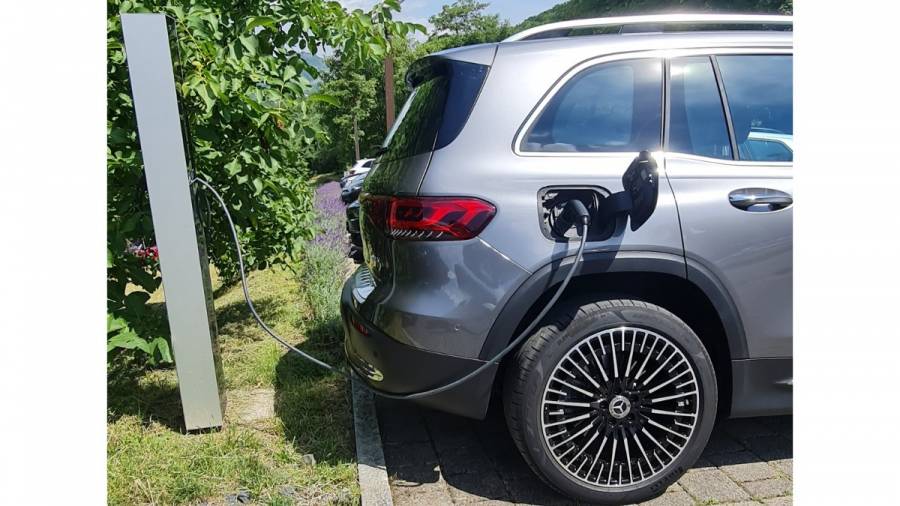
Inside the cabin, the dashboard is traditional Mercedes, with almost the same elements as you'd see in the GLA such as that aluminium insert on the dashboard and the minimal door pad with the simple door control knobs. A little texturing on the dashboard and the rose air-con gold vents are the only separators distinguishing the EQB from the GLB. The EQB being the more utilitarian electric SUV in the portfolio, you get a reasonable amount of luxury, but nothing that's too fancy. The seats are well cushioned and over long distances, they should be comfortable. The steering wheel is compact and chunky but with all the controls required, quite unlike the larger and slimmer one on the EQS. It also has a single glass panel behind the steering wheel which houses both the infotainment and the cluster display. The infotainment screen displays the same level of information you get on any other Mercedes but adds in the EQ windows that provide driving/efficiency information relevant to this particular vehicle.
Second-row space is generous, with ingress and egress well sorted out. Since the EQB is based on the GLB platform, it retains some of the structural elements such as the transmission tunnel. So while the battery sits below the floor, a tiny portion of the transmission tunnel still protrudes into the cabin. It's not inconvenient for anyone seated in the middle of the rear bench, but over long journeys, it could be irksome. The EQBs also got a massive boot to boot, but if the third-row option were offered, and used, this would compress boot space significantly. With the two-row configuration, the minimum boot space is around 495 litres, which can be extended up to 1710 litres with the second row folded down.
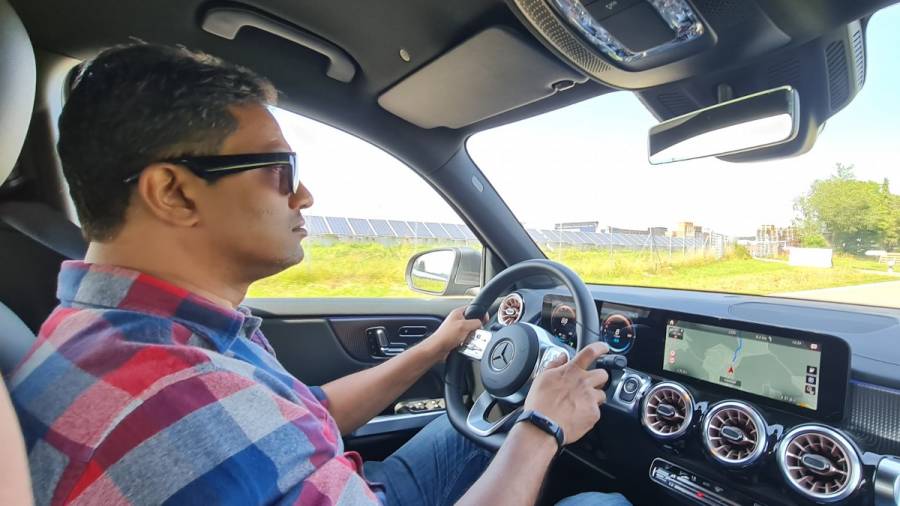
What I found interesting about the interior space is that the dimensions of the EQB are smaller than the EQC. Its 4684mm length and 1834mm width is lesser than those of the EQC, yet it feels more spacious. This is because of the EQBs boxier shape compared to the coupe-like silhouette of the EQC. You get more headroom which extends deeper into the cabin, unlike the EQC which has a sloping roofline.
The EQB uses an all-wheel drive powertrain which makes it quite sprightly. It uses an asynchronous motor at the front axle and a permanent magnet synchronous motor on the rear axle. Thanks to the instantaneous torque supply, 390Nm of it coming from the 2 electric motors the EQB is quick. 0-100kmph is met in around 8 seconds which is fast for an SUV that tips the scales at 2.1 tons.
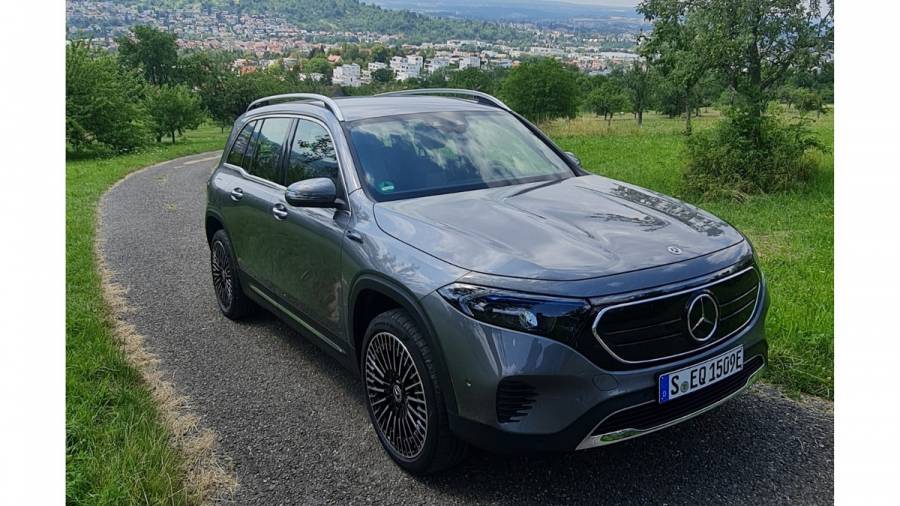
The battery pack is a 66.5kWh Li-ion pack that sits directly under the passenger seats. With a 100kW DC charger, it gets a full charge in just about an hour. WLTP cycles place the range of this car at around 419km, but real-world conditions in economy mode would bring this down to I'd presume around 370-380km. That range is available in eco mode, one of four driving modes including sport, normal and individual. Recuperation takes place in different ways, you have the paddle shifters behind the steering wheel that provide 3 levels of recuperation. There are 4 selections you can make with the paddle shifters, there is 'D-' which is the strongest recuperative mode, 'D' which is gentler but also less effective or 'D+' which is purely for coasting without recharging. The fourth mode is the D Auto, activated by pulling on the paddle shifter for more than 3 seconds. In this mode, the control module automatically decides the best power delivery or recuperative mode to be in for optimising range. I'd prefer staying in D+ as I found it also allows the most regen without jerking your head off your shoulders. What you don't get however is the one-pedal driving effect, that most manufacturers are now offering on their cars. Its absence however is something I appreciate, it forces drivers to be more aware of what's happening in their immediate surroundings without skipping a vital step. Physical braking also forces faster energy regeneration, so there is that benefit as well.
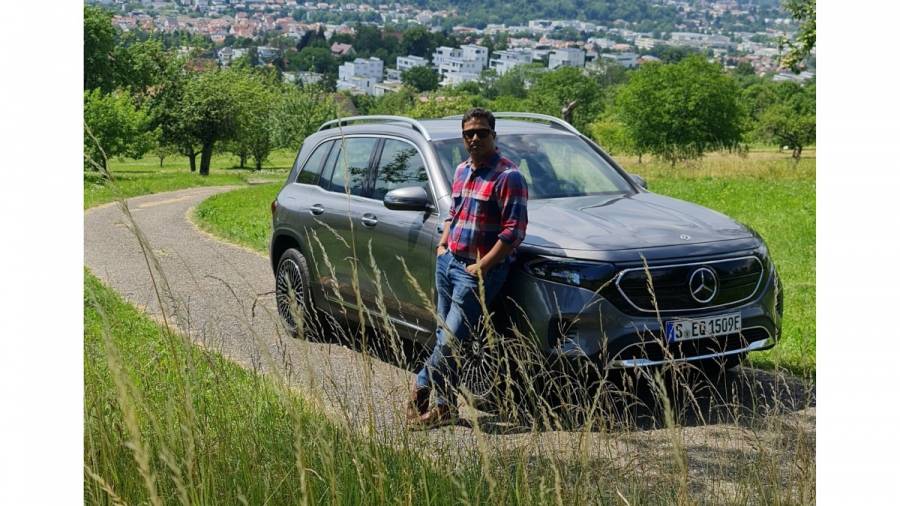
So what is the EQB like to drive then? I'd say the EQB is a friendly, practical, everyday SUV. It's noiseless, almost, because I did hear a fair amount of wind noise emanating from the wind flow over the A-Pillars or the outside RVM. That aside, what I found impressive is the stability and the ride comfort in the EQB. Despite the battery pack sitting under the floor pan, the EQB has better ground clearance than the EQC, which would allow it to adapt to our road conditions better than the EQC. That it has all-wheel drive also engages better control and dynamics. The suspension works well, cornering stability is confident, and the ride is just what you would need for driving conditions at home. You aren't looking for supercar performance so ignore the acceleration, but a 350km plus range should keep you out of range anxiety for at least 5 days of the week.
All in, the EQB is a well-rounded package, and one that should see Mercedes do good numbers since it would be priced below the EQC. It is certainly a better product than the EQC, and as far as electrics go, the EQB makes a very strong case for itself. That it is an SUV, further sweetens the pot, and could make it the best-selling EV for Mercedes-Benz in India.?
Also Read:
Mercedes-Benz E-Class Long Wheelbase - Class Apart, No Matter Where You Are Seated
2022 Mercedes-Benz EQS review, first drive-through S-Class of EVs
Starts Rs 63.6 Lakhs
2925cc
Automatic
194
600
-NA-
-NA-
-NA-
228
390
-NA-
